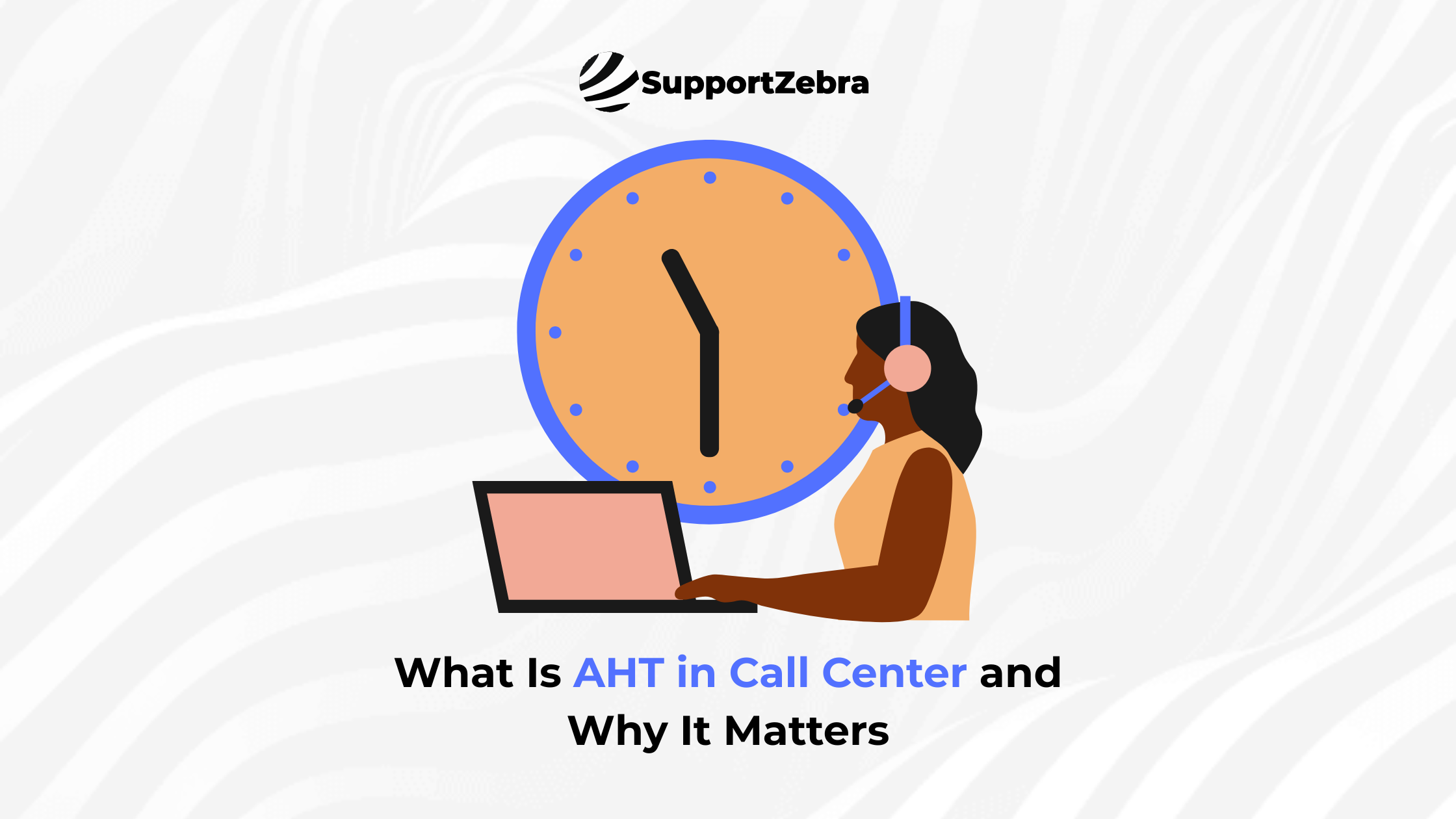Enhancing Customer Experience in Call Center Operations
Key Takeaways:
-
AHT stands for Average Handle Time and tracks the total time spent on a call.
-
Lowering AHT can improve efficiency, customer satisfaction, and reduce costs.
-
Monitoring AHT helps identify bottlenecks and training needs.
-
SupportZebra can guide you in reducing AHT while keeping service quality high.
Running a call center is not easy. Long wait times, slow calls, and stressed agents can frustrate both your team and your customers. When this happens, you may see lower satisfaction scores, rising costs, and even lost business. Many leaders know something is wrong but are not sure where to start fixing it.
This is where understanding AHT can help. By tracking and improving this simple metric, you get a clear view of what slows your team down and what your customers really need. With the right support, you can lift your service, ease the pressure on your agents, and keep customers happy. We are here to guide you through that process and help you turn every call into a better experience.
What Does AHT Mean in a Call Center?
AHT stands for Average Handle Time. It measures the total time an agent spends on a call, including:
- The time talking to the customer
- Any hold time
- Follow-up tasks after the call
This metric helps managers understand how efficiently calls are handled. A lower AHT usually means faster service, but it’s important to balance speed with quality. Too much focus on speed can frustrate customers and agents alike.
Why Is AHT Important for Call Center Performance?
AHT is one of the most important metrics for call centers. It affects both customer satisfaction and operational costs. If calls take too long:
- Customers may become frustrated and leave
- Agents may feel stressed and burned out
- Operational costs can rise due to longer call durations
Tracking AHT allows managers to spot inefficiencies and improve processes without compromising service quality. It gives a clear picture of how well your team handles customer interactions.
How Is AHT Calculated?
Calculating AHT is simple. The formula is:
AHT = (Total Talk Time + Total Hold Time + Total After-Call Work) ÷ Number of Calls
For example, if agents spend 500 minutes on 50 calls, the AHT is 10 minutes per call. Regularly measuring AHT helps you spot trends and identify which areas need improvement.

What Is a Good AHT for Call Centers?
There is no one-size-fits-all number. A “good” AHT depends on your industry, call type, and complexity. Some tips to find your target:
- Benchmark against similar companies
- Track your historical performance
- Adjust goals as your team improves
Remember, shorter AHT is not always better. Focus on quality service and efficiency together.
How Can I Reduce AHT Without Hurting Customer Experience?
Reducing AHT safely requires strategy. Some effective methods include:
- Training agents for faster problem-solving
- Using knowledge bases to reduce hold time
- Streamlining after-call work
- Implementing smart call routing
The goal is to make calls efficient without making customers feel rushed or neglected.
What Factors Affect AHT in a Call Center?
Several factors can impact AHT, including:
- Call complexity and customer needs
- Agent experience and skill level
- Technology used for support
- Internal processes and workflows
Understanding these factors helps managers identify where improvements are needed.
How Often Should AHT Be Measured?
AHT should be measured regularly to track trends and spot problems early. Some best practices:
- Daily monitoring for large call centers
- Weekly or monthly reporting for smaller teams
- Regular review alongside other KPIs like CSAT or first call resolution
Frequent measurement allows timely interventions and continuous improvement.
How Can SupportZebra Help Improve AHT in My Call Center?
SupportZebra helps reduce AHT while keeping service quality high. We provide:
- Expert analysis of call metrics
- Tailored training for agents
- Optimized workflows and processes
- Tools and support for consistent improvement
With our guidance, you can balance efficiency with customer satisfaction, making every call a positive experience.
Get SupportZebra’s Help to Lower AHT and Delight Customers
Understanding and improving AHT is key to running an efficient call center. By tracking this metric, you can spot bottlenecks, support your agents, and provide faster, better service to your customers. Balancing speed with quality ensures your team stays productive while your customers stay satisfied.
Ready to take your call center performance to the next level? Contact SupportZebra today and let our experts help you reduce AHT, improve efficiency, and deliver a better experience for every customer.
Frequently Asked Questions
Average Handle Time (AHT) impacts customer satisfaction by balancing efficiency and quality; rushed calls make customers feel unheard or dismissed, lowering CSAT scores, while overly long calls frustrate due to unresolved issues.
Technology improves AHT through AI chatbots for routine queries, smart routing to avoid repeats, CRM tools for quick data access, and cognitive tech for real-time agent guidance.
Ignoring AHT leads to upset customers, overwhelmed agents, declining satisfaction scores, higher churn, and financial losses from inefficient operations. Long AHT signals poor training or complexity, eroding trust and loyalty.

